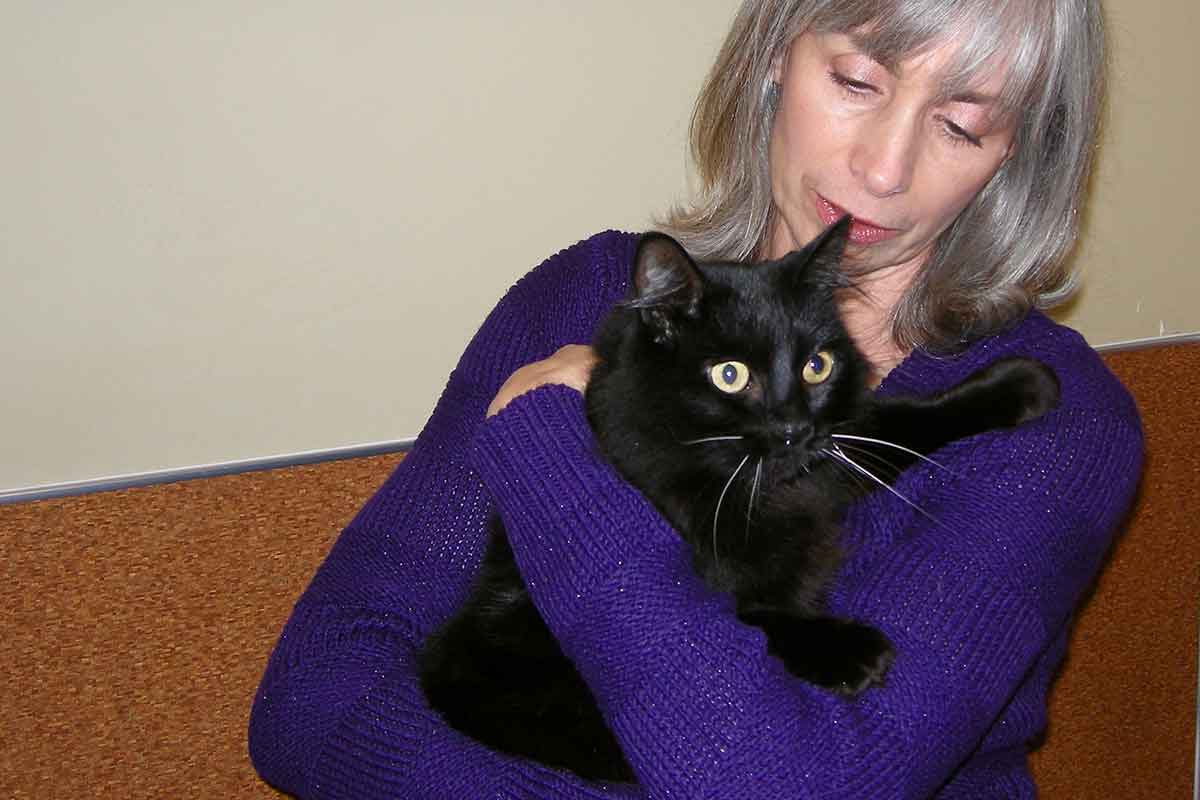When we see a feline fluff ball, we want to scoop her up and cradle her in our arms like a baby. This may be a natural behavior for us, but not so much for cats.
The feeling of feet off the floor is stressful to some cats and they may squirm to get down, injuring themselves or you or both. Think about it like this. When you were a child, did you have that one relative who made a beeline straight toward you and tickled you mercilessly? The more you squirmed or struggled to get away, the more the tickling continued. That’s no fun!
While there are exceptions, most cats would rather not be picked up and held at all. Sometimes it’s inevitable that a cat will be picked up and held, but doing it properly helps cats feel more positive about the experience and helps prevent you from getting a swat or scratch.
Dos and Don’ts
Follow a few basic guidelines to ensure a positive, pleasant holding experience for both you and the cat. Let’s get the Don’ts out of the way first so we can focus on the warm and fuzzy Dos.
Don’t:
- grab the cat head-on. Cats see this as a threatening behavior, and they may back away or swat at you.
- sneak up from behind. No one likes to be startled, least of all cats, and you may wind up receiving your own surprise attack in return from a frightened cat.
- pick up and carry a cat by the scruff of the neck. You may have seen a mother cat pick up and carry her kittens by the scruff of the neck. That’s acceptable between mother and kitten, but it’s not how humans should carry a kitten and certainly not an adult cat.
- pick up a cat you don’t know or, more importantly, who doesn’t know you.
- try to pick up a nervous or angry cat. The best way to console an upset cat is to give her some quiet time alone.
Do:
- Always use two hands to pick up your cat, even a kitten. This provides a sense of security.
- Slide a flat hand along side the cat’s ribcage, then move your hand under the chest, placing your hand between the front paws.
- Your other hand slides under the backside to provide support. No dangling limbs, please!
- Once the cat is comfortable and secure, bring her body to your chest. Keep a secure hold maintaining contact but without a tight grip.
Personal Preferences
Each cat has preferences about how, or if, she wants to be held. Once your cat is securely against your body, she may be quite comfortable right there. Other cats like to drape their front paws in the over-the-shoulder position. Be sure to maintain support of the backside in this hold. A few cats do accept the cradle hold but beware those claws point toward your face should your cat become startled.
Cats are particular about who is allowed to hold them, and some cats don’t like being held by children. Children may grab too tightly, pull fur, or carry the cat in an unsecured fashion similar to carrying a football. Teach children to sit quietly and let the cat approach them. If the cat wishes, she can sit in their lap and soak up gentle petting. Teach children the signs of when the cat has had enough, such as a thrashing tail or flattened ears, and supervise their interactions.
A Soft Landing
Just like an airplane flight, getting airborne is halfway there; the second part is a soft, secure landing. Pay attention to your cat’s body language. She will communicate to you when she is ready to get down. Squirming, wiggling, and pushing away all signal “Put me down.” Don’t wait for the communication to escalate to swats, hisses, or bites. Never drop your cat on the floor or let her leap from your arms. Gently set her on the floor, cat tree, or other acceptable surface so she can regain her “four on the floor” footing. Notice as you get closer to the floor her legs extend out and paws open wider, somewhat similar to the landing gear and wheels of an airplane coming in for a landing. End the session with your cat’s favorite reward.
Knowing how to properly hold your cat lets both of you enjoy the show of affection with minimal stress.
This article was reviewed/edited by board-certified veterinary behaviorist Dr. Kenneth Martin and/or veterinary technician specialist in behavior Debbie Martin, LVT.








